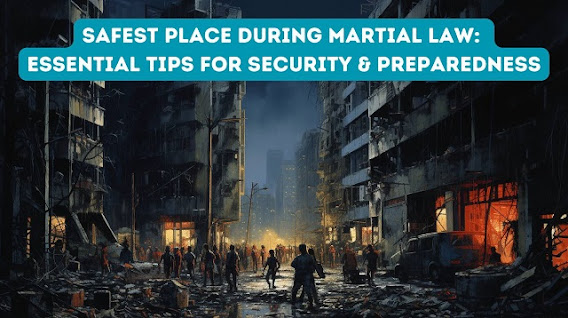International Scholars Warning on Societal Disruption and Collapse (While nobody making any specific predictions, and I certainly can’t tell you that it’s going to happen on this date, in this year; I can tell you that the possibility is very real!)
According to royalsocietypublishing.org- Environmental problems have contributed to numerous collapses of civilizations in the past. Now, for the first time, a global collapse appears likely. Overpopulation, overconsumption by the rich and poor choices of technologies are major drivers; dramatic cultural change provides the main hope of averting calamity.
A worldwide collapse of civilization could be triggered by what are called existential risks. Existential risks have been studied extensively by Swedish philosopher Nick Bostrom, who created the graphic above of qualitative existential risk categories. Bostrom now runs the Future of Humanity Institute at Oxford University, which specializes in the study of existential risks.
Bostrom defines existential risks as a risk, “…that threatens the premature extinction of Earth-originating intelligent life or the permanent and drastic destruction of its potential for desirable future development…” A notch down from existential risks are global catastrophic risks. Bostrom has edited a collection of essays on Global Catastrophic Risks with Milan Ćirković. They define global catastrophic risks as, “…a risk that might have the potential to inflict serious damage to human well-being on a global scale…”
While I am sympathetic to the other answer to this question given by John Dewar Gleissner, which emphasizes the robustness of civilization and the unlikelihood of complete collapse not followed by recovery, I think it nevertheless a good idea to be fully aware of the existential risks that could bring an end to civilization, even if they are unlikely.
From the table above, with the x axis being severity and the y axis being scope, we can see, in principle, that any event of sufficient severity and scope can escalate into an existential risk. In practice, by contrast, what kinds of events might escalate into existential risks? Following is a list of existential risks, broken down accordingly whether they are anthropogenic (caused by human activity) or non-anthropogenic, as well as distinguishing between short term (within the coming century) and long term (beyond the coming century) risks:
Near-term Anthropogenic Existential Risks (within the coming century)
- Anthropogenic Climate Change – while anthropogenic climate change may constitute a global catastrophic risk rather than an existential risk for human beings as a species, if the Ross Ice Shelf collapsed into the ocean all the coastal cities in the world would be inundated, posing an existential risk to the world’s largest cities, their ports, and therefore the global trading infrastructure, hence an existential risk to civilization itself.
- Unintended Consequences of Genetic Technology – GMOs (genetically modified organisms) loose in the biosphere, or weapons of biological warfare, could evolve into an unintended pandemic indistinguishable from a naturally-occurring pandemic. Alternatively, artificial forms of life could multiply out of control, covering the planet in a “green scum” scenario.
- Stagnation or Civilizational Failure – if industrial-technological civilization stagnates or culminates in a dysfunctional civilization (e.g., global tyranny), the technological innovations forthcoming from a dynamic civilization would cease, and civilization would cease to offer the opportunity to mitigate existential risks, failing to respond to them.
Long-term Anthropogenic Existential Risks (beyond the coming century)
- Unfriendly AI – also known as the “technological singularity,” in the event of the emergence of “unfriendly” superintelligent AI (artificial intelligence), human beings would have a difficult time defending themselves or justifying their continued existence. Most existential risk researchers are now focused on this as the most important scenario to counter, partly due to recent advances in AI.
- Gray Goo – nano-scale, self-reproducing mechanisms loose in the biosphere could rapidly reproduce like the mechanistic equivalent of a “weedy” species, covering the planet in a “gray goo” of microscopic machines.
- War – future wars waged with the technology of a highly advanced civilization present a clear threat of human extinction; also, weapons of mass destruction proliferate over time, so that it only appears to be a matter of time before terrorist entities or apocalyptic movements come into their possession and use them for ideological ends. -SEE VIDEO
Near-term Non-Anthropogenic Existential Risks (within the coming century)
- Pandemic – as human population numbers rise, the human population potentially becomes an exploitable resource for any parasitical organism. The longer humanity persists without a major pandemic, the more likely one becomes. (Anthropogenic pandemics are also a possibility.)
- Solar Flares – solar flares occur routinely and pose little danger, but an especially severe solar flare could overload the global electrical grid and potentially destroy every electronic device on earth, meaning a rapid end to industrial-technological civilization.
- Ecosystem collapse – whether under pressure of industrial pollution or due to diseases that attack domesticated plants and animals, the effect of ecological collapse of the food production industry or more generally of the biosphere, if it passes a tipping point, could lead to rapid human extinction. There are several examples in history of species, once plentiful, that experienced a sudden and catastrophic decline rapidly followed by extinction. The most famous example of this is the passenger pigeon.
Long-term Non-Anthropogenic Existential Risks (beyond the coming century)
Must watch this video- Experts predict that an EMP strike that wipes out electricity across the nation would ultimately lead to the demise of up to 90% of the population.
- Non-anthropogenic Climate Change – in the long history of the earth the climate has varied between global glaciation and steaming swamps; dramatic climate change is a certainty in the long term, and could pose an existential risk to humanity and also to civilization, but climate change of this magnitude usually occurs over geological scales of time, and would not be noticed in the lifetime of a single human being.
- Massive Vulcanism – mass extinctions preserved in the fossil record suggest that periods of the earth’s history have been punctuated by massive vulcanism (e.g., the Deccan Traps or the Siberian Traps). Massive volcanism is also implicated in climate change. Supervolcanoes denude large areas through pyroclastic flows, cover very large areas with ash, and inject enormous amounts of carbon into the atmosphere, especially if they erupt through a coal deposit. These collected impacts could alter the biosphere so significantly that human beings could no longer survive on Earth.
- Planetary Collisions – the earth is vulnerable to collision with asteroids and comets; sufficiently large collisions in the past have resulted in mass extinctions. Large impacts become less common over cosmological scales f time, but we cannot rule out the possibility of another event on the scale of the K-Pg impact (which resulted in the extinction of the dinosaurs).
The above list should not be considered complete or exhaustive. There are other existential risks that could be added to it. That should suffice, for the time being, to answer the question in the affirmative that a worldwide collapse of civilization is possible.
In conclusion, I would like to add: Professor Dave is of the opinion that- While nobody here is making any specific predictions, and I certainly can’t tell you that it’s going to happen on this date, in this year; I can tell you that the possibility is very real, and the reality of the situation is our politicians and leaders continue to put policies in place that ensure some very real future problems.
















Even if it happened this year, the Dem media would NOT report it, until after Nov. elections
ReplyDeleteLeftism is the problem throughout the world. Everything can be blamed on it.
Delete